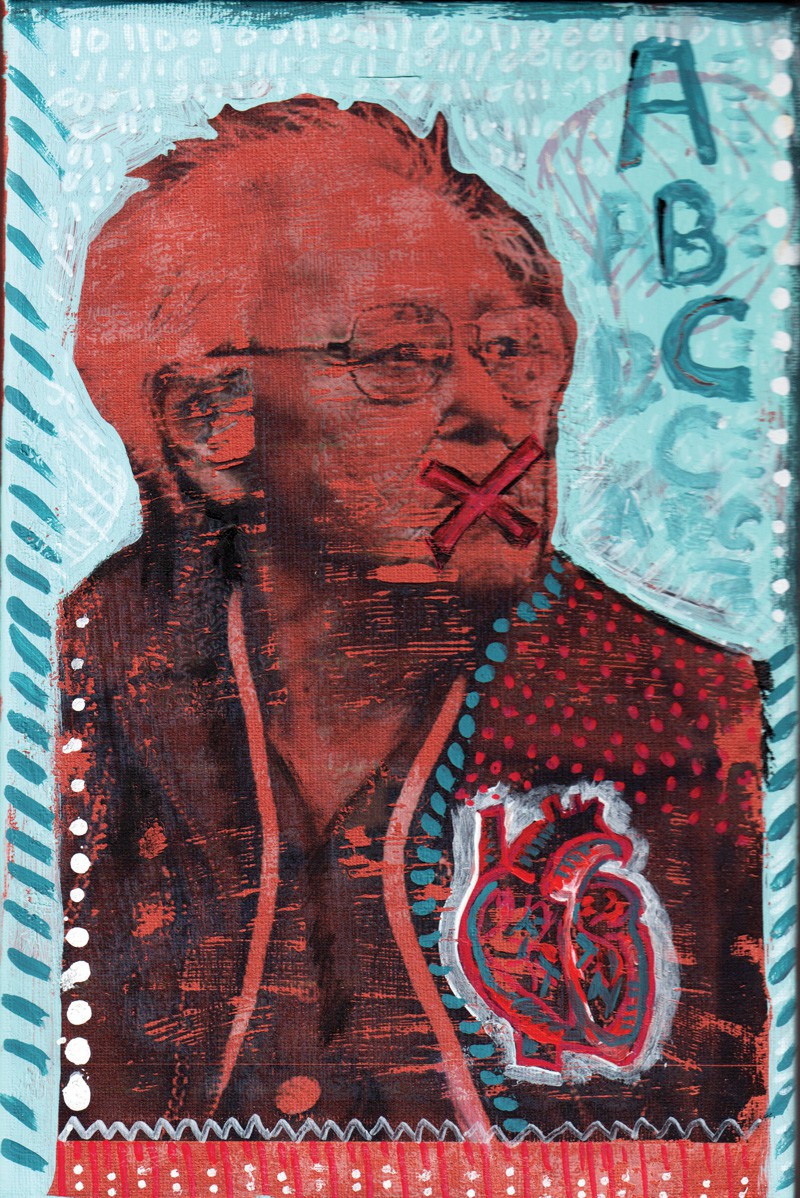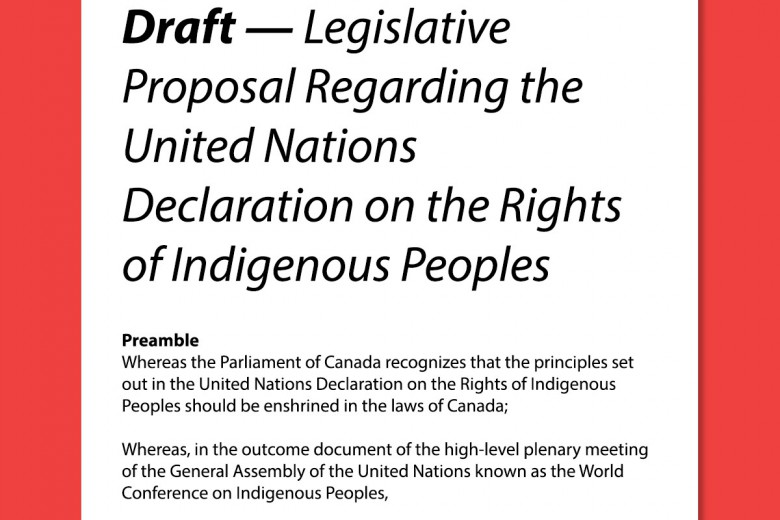
lin•gui•cide — noun:
the killing of languages without killing the speakers.
For the most part, Canadians are probably aware that linguicide was a central and overt policy in residential schools throughout Canada. Indeed, the stories of First Nations children being routinely punished in residential schools for speaking their language, sometimes even with needles stuck through their tongues, are legion. While it is assumed that linguicide died with the closure of the last residential school in 1996, in truth it continues as a covert policy into the present. As Roland Chrisjohn stated, “residential schools never ceased operation; they merely changed their clothes, and went back to work.” Though it is no longer quite so easy to openly punish First Nations students for speaking their language, the ongoing dominance of colonial languages over Indigenous linguistic groups continues to fuel linguicide.
The continued drive for linguicide is partly a response to two of the official reasons for closing residential schools, the first being that, apart from the now notorious abuses, the quality of education in residential schools was inferior by any standard; and second, that residential schools had failed to assimilate most First Nations children. To address these shortcomings, policy makers in the 1940s, 50s and 60s began toying with a new solution: integrating First Nations children into public schools. In fact, educators and policy makers at the time openly proclaimed assimilation to be both a worthy and achievable objective through integrated education.
Now, more than half a century later, we know that integrated education for First Nations children has been a disaster. While it did make available a somewhat better quality of education for First Nations youth, more than 50 per cent of these youth are dropping out of school today. To be more precise, they are being pushed out of school. The tragedy of integrated education is not only that it fails those who are pushed out, but also that it takes a terrible toll on those First Nations students who remain, for to succeed in this form of education requires a certain degree of assimilation on the part of the child.
For far too long, educators have tended to address the high drop out rate by blaming First Nations children themselves, in addition to their families, their communities, their cultures, their languages and their socio-economic conditions. The use of the term “drop out” itself belies a blame-the-victim form of thinking. Other evidence of this is the proliferation of remedial programs designed either to “fix” First Nations children, or simply to entice them to stay in school through tutoring programs, the inclusion of Indigenous cultures and languages in school, and the hiring of Indigenous personnel. To use the term push out instead of drop out is to reverse the thinking and to place the burden of blame on the schools and policies of the dominant society.
While schools can no longer get away with physically punishing children for speaking their languages, they still practice effective linguicide by imposing a dominant language (English or French) as the medium of instruction and by ignoring, stigmatizing and effectively replacing or displacing Indigenous languages. Linguistic rights scholar Tove Skutnabb-Kangas has termed this as “subtractive language education” since it subtracts from a child’s linguistic repertoire instead of adding to it. While it uses a variety of subtle carrot and stick approaches to impose the dominant language, what makes this form of education especially effective is that it separates Indigenous children from proficient speakers of their language for most of the day and requires them to function exclusively in an imposed and alien language.
Though teachers may no longer physically punish children or speak negatively about their mother tongue, the subtle message is that the Indigenous language is not useful or necessary, and that it may even hurt children to be able to speak it. Indeed, it is the subtlety of subtractive education that makes it at least as effective as outright punishment in destroying a language. Subtractive language education is also accurately called submersion education insofar as it submerses Indigenous children in both an alien language and an alien culture and expects them to sink or swim. The result is that full proficiency in the dominant language is rarely achieved because children are not given the chance to first become fully proficient in their first language.
The problem for Indigenous children exposed to this system is that it generally takes about two years to become socially proficient in a second language and five years to become proficient enough to function well academically in a second language. As a result, educators unaware of this disparity tend to label Indigenous students early in their schooling as learning disabled, or worse, and it is these students who eventually tend to be pushed out of school.
Clearly, the promise of quality education for First Nations children in Canada has not been fulfilled by integrated education. The problem lies largely in the imposition of a dominant language as the medium of instruction, which ensures that equal access to education is denied to Indigenous or minority-language children.
According to some researchers, the problem is more serious than just unequal access to education. Submersion education has been linked to serious mental harm, including social dislocation and other forms of psychological and cognitive harm. Considering that First Nations in Canada have been subjected to submersion education for generations, it goes a long way to explain not only the disproportionately high rates of poverty, addiction, incarceration and suicide that plague First Nations, but also the social, economic and political marginalization that Indigenous people worldwide continue to suffer from.
The links between these conditions and the common experience of submersion education have led linguistic rights scholars such as Skutnabb-Kangas to conclude that the imposition of dominant languages as a medium of instruction is a “weapon of mass destruction.” As such, it fits the UN definitions of Genocide and Crimes against Humanity. While Canada may insist that it did not know its policies would have such destructive consequences at first, it can no longer plead ignorance.
A tool of colonization and land expropriation
In the early years of colonization, the destruction of Indigenous languages in what is now Canada was not considered essential. Traders needed Indigenous trappers to maintain their form of life on the land and explorers needed Indigenous peoples’ knowledge in order to explore and map the land. Once European powers began competing with each other for land and resources, they established colonies as a way to solidify their claims. Led by a belief in their own cultural and racial superiority, colonial authorities routinely appropriated lands simply by granting them to prospective settlers without informing or compensating First Nations. Known as settler imperialism, this genocidal process separated Indigenous Peoples from their food sources and regularly triggered resistance, which all too often served as a convenient justification for wars of extermination. Either way, First Nations Peoples who survived quickly found themselves dispossessed, displaced and powerless to seek justice or restitution.
Once England secured what is now Canada against the claims of the French, the colonial project of expanding across the continent began in earnest. Though Indigenous resistance was frequent, authorities soon found settler imperialism to be a cheaper and more effective strategy than war. Central to this process was the establishment of residential schools, which were charged with the duty of civilizing Indians by imposing English and eradicating Indigenous languages. Though described benignly as being in the best interest of the Indians, the real objective of this policy was much more sinister. So closely did language tie Indigenous Peoples to their lands that authorities focused on deliberately destroying First Nations languages as the key to severing ties between the people and their lands. The goal, of course, was purely material — to remove First Nations Peoples as barriers to settlement, thereby opening the land and its resources to appropriation by the newcomers. While other strategies were employed to achieve the same ends, including the slaughter of the buffalo, the imposition of the Indian Act, and the establishment of reserves, linguistic destruction has formed the backbone of Canadian Indian (and land acquisition) policies, both official and unofficial, until the present.
As in other parts of the world, this destruction of Indigenous languages serves powerful economic, political and techno-military interests as it serves to disconnect First Nations Peoples from their lands and opens the door to unfettered exploitation and destruction of natural resources. Little wonder that linguistic diversity in the world is now said to be declining much faster than bio-diversity — so much so that 95 per cent of the world’s languages are predicted to become extinct by the end of this century. Since submersion education is now linked to serious psychological, educational and cognitive harms, its role in the impoverishment and marginalization of Indigenous Peoples can also be said to serve the powerful interests cited here. Indeed, as long as Indigenous Peoples continue to experience these consequences, it will serve, in turn, as a further excuse to keep them dispossessed well into the future.
The consequences of submersion education in Canada
The success of submersion education in destroying First Nations languages is evident in the statistics. Today there are almost no child speakers of most First Nations languages in Canada. With no child speakers, all but three of the 60 or so original languages in Canada are predicted to become extinct by the end of this century. With them will go the whole body of history, culture and knowledge contained in these languages. At present, the situation of the Maliseet First Nation in New Brunswick, in which only 10 to 20 per cent of its people are fluent, most of whom are over 60 years of age, is common to a large number First Nations languages in Canada.
Existing core programs of 30 or so minutes a day of language instruction are useless for maintaining or creating fluency, as 90 per cent of the school day and all of the “real” subjects are conducted in the dominant language. The subtle message is that First Nations languages are not important nor worthy of the same linguistic rights as French and English. The active destruction of First Nations languages in English and French schools, even on reserves, continues in a variety of other subtle ways — through the imposition of a provincial curriculum in English and French, the promotion of English and French language pre-school programs for Indigenous children, and the long-standing practice of requiring Indigenous people to take teacher training in English or French to become certified as teachers, to name a few.
The internationally recognized right to speak one’s mother tongue proficiently (see the UN Declaration on the Rights of Indigenous Peoples, for example) is thus violated in the case of Indigenous children in Canada by the simple fact that there is generally no option for education in the medium of the mother tongue. As a result, First Nations children are forced to attend English or French schools by law. The imposition of dominant languages on Indigenous children is now considered to be the single most important yet correctable factor in the shamefully high push out rate of 50 per cent among First Nations youth, compared to the 10 to 15 per cent of non-native students who do not complete school.
Language immersion and decolonization
Considering both the blatant and subtle strategies still employed to destroy Indigenous languages, we can no longer accept that language attrition is a natural process, nor one achieved without agency. Indigenous languages are not being “lost” — they are being systematically ripped from Indigenous Peoples through submersion education. It is by understanding the deliberateness of the process — however unconscious or well-meaning it is claimed to be — that appropriate action can be undertaken to rectify the situation. Unfortunately, the window of opportunity for regenerating most of the precious Indigenous languages, such as Maliseet, will be gone in less than a decade unless massive policy changes and funding supports are instituted immediately.
With such harmful consequences now known to result from submersion education, there is little excuse for Canada to continue to deny First Nations children the right to publicly funded education taught in their the mother tongue. A key to achieving widespread support for this goal is to educate society not only about the negative consequences of submersion education, but also the enormous benefits of mother tongue education. A short list of those advantages is as follows:
- Immersion education is the best and most cost-effective means of learning to speak a language.
- Research has shown that learning to speak, read and write proficiently in the medium of one’s mother tongue actually enhances one’s ability to speak, read and write in any other language.
- Full bilingualism or multilingualism tends to enhance academic achievement, not hinder it.
- Indigenous children educated a minimum of six to eight years in their mother tongue tend to outperform their peers educated monolingually in a dominant language.
- Within an immersion program there is less need to consciously teach traditional culture, values and beliefs since these aspects are embedded in the languages.
- Schools conducted in the medium of endangered languages go a long way in ensuring that those languages will survive since they create fluent child speakers.
- Such schools also ensure that the linguistic and educational rights of Indigenous children are respected, not only for those who already speak their language, but also for those who may have never learned their mother tongue due to the processes described here, but still have a basic right to become fluent in the language of their community.
While initial costs of establishing immersion programs may be large, the overall benefits of immersion education are certain to be enormous insofar as improved school completion rates are known to correlate with lower social costs in terms of poverty, addictions, incarceration and suicide. In one cost-benefit analysis, for example, it was determined that it costs more to keep one person in prison for one year than it does to provide a private tutor to educate a person in the medium of the mother tongue for nine years. For Indigenous Peoples themselves, the benefits of a populace thoroughly educated and proficient in their own language, culture and history is a well-recognized key to self-sufficiency, health, and ultimately to decolonization.
Considering the harms of submersion and the benefits of immersion, both for dominant societies and for Indigenous Peoples, it is a travesty that immersion education for the First Peoples of this land is not widely supported, especially in this country which boasts the benefits of bilingualism. Hopefully, this article will help in the fundamental need to inform the public about the ongoing existence of linguicide in Canada, so that action can be taken before it is too late.






